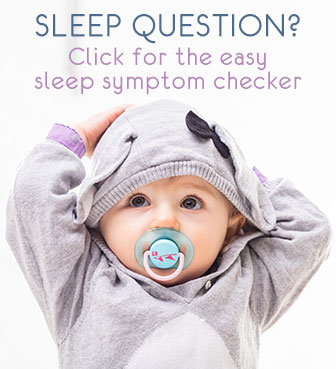What is SIDS ?
Author Name: Heidi Holvoet, PhD
Medical fact-check: Dr Leah Alexander, M.D., F.A.A.P.
SIDS, or Sudden
Infant Death Syndrome,
is when a baby dies suddenly with no obvious signs of illness
or any other possible cause.
It is the most cruel and frightening thing that can happen to a newborn
and her family.
Cot
death
and crib death
are two common terms used to refer to the same syndrome, although SIDS
can and does also occur on the sofa or in a play pen.
To parents of SIDS babies
My thoughts are
with you
constantly while writing these pages. Please accept my sincere
condolences and warm thoughts for you and your little angel.
These pages are written for information purposes, to help increase
awareness and point at measures towards reducing the risk of SIDS.
If any content here makes you feel uneasy or is inappropriate in any
way, I apologize. Please let me know through the contact
form so I can make the necessary changes.
If you are looking for support, you can also contact me. For
specialized support, allow me to refer you to your local SIDS
organization. You can find it through the International Society for the
Study and
Prevention of Infant Death ISPID.org (opens in new window).
Sadly enough, the What is
SIDS?
question does not have simple or clear answers. The syndrome remains a
mystery in
many aspects: there is no
single cause
or risk factor associated with it.
It is a so-called diagnosis
of exclusion. This means that when a young baby dies and
no cause is found, Sudden Infant Death Syndrome is used as a label.
A lot of research has been done and is done today.
Much of the medical literature about SIDS mentions infant brain immaturity or an “undetected defect” that impairs breathing during sleep, see for example this article and here.
Even if
SIDS has not disappeared completely, numbers have decreased in the past
2-3 decades.
This decrease is largely attributed to campaigns by governments world
wide to make parents aware of the possible risk and how
to reduce this risk.
SIDS risk factors
Research has deduced higher-risk
factors from studying affected babies and their families worldwide.
Babies with one or more of these
have an increased risk of being affected by Sudden Infant Death Syndrome.
A baby may be at higher
risk if she:
- was born prematurely
- had a low birth weight
- was subject to passive smoking (due to smoking by mother or others around during pregnancy and after birth)
or if mom:
- was overweight during pregnancy
- is a teen mother
- was drinking alcohol during pregnancy
There's no need to panic if any of this factors apply to your situation, but you may need to pay
extra attention to certain precautions and, in any case, consult a medical professional.
Remember that all babies can be victims. Whether your
child has none of these risk factors or several, it is ALWAYS important
to follow the prevention guidelines.
Statistics
About SIDS and Statistics
What
is SIDS? With many uncertainties remaining, one often talks about SIDS
in terms
of numbers, statistics.
This sounds awful since one is actually talking about real babies and
their families, who should never be treated as numbers.
But statistics do allow science to study SIDS and to try and reveal as
many risk factors and risk reduction guidelines as possible.
Numbers often vary by country, not only because of different cultures
and habits, but also because of the way each country defines and
collects numbers.
Only numbers of general interest are included here. Although these
numbers have been selected with the utmost care, please view them for
what they are: average numbers that give a general idea about the
topic.
SIDS affects babies of all countries, cultures, and backgrounds, but the incidence is higher among Black and Native Americans as is also detailed in this peer-reviewed article.
The peak risk age is between 2 and 4 months old. In principle SIDS
occurs from 1 month up to 1 year old, with very rare cases at higher
and lower ages.
More baby boys are affected than girls.
Each year, worldwide, about 1 in 1000 babies die and are diagnosed with
SIDS. In some countries this number went
down to 1 in 10 000 babies in the past decades.[1],[2]
Resources
[1] International
trends in sudden infant death syndrome
Hauck RF,
Tanabe KO. 2008. Pediatrics 122(3):
660-666.
[2] Supplemental
analyses of recent trends in infant mortality
Kochanek, KD,
Martin, JA. Reviewed October 15, 2008. Hyattsville, Maryland: National
Center for Health Statistics. Available at http://www.cdc.gov/nchs/products/pubs/pubd/hestats/infantmort/infantmort.htm
(opens in new window)

Baby waking every hour?
by Heidi Holvoet, PhD

Sleep schedules by age
by Heidi Holvoet, PhD

Separation Anxiety
by Heidi Holvoet, PhD

Crib safety guidelines
by Heidi Holvoet, PhD

Why does my baby wake up every hour?
by Heidi Holvoet, PhD


